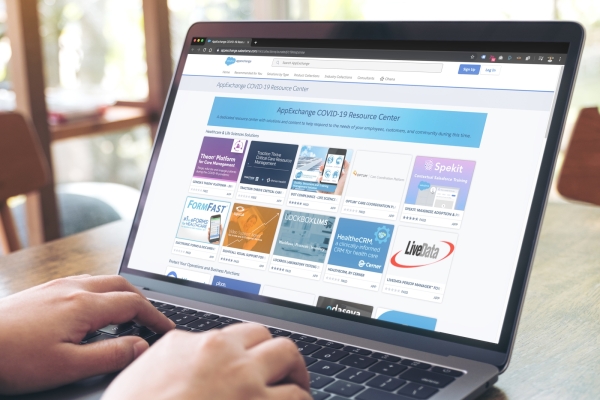Across North America and Europe, over 150 million workers have taken up careers as independent contractors. Much of this growth can be attributed to the Uberization of our society, where ride-hailing and task-oriented service platforms are accessible through our smartphones.
A recent McKinsey report found that knowledge-intensive industries, like field services, are one of the fastest-growing segments of the gig economy. With access to augmented reality, video assistance, and field service management tools, field service organizations are poised to engage the gig economy for field service excellence in the digital age.
Field Service Expectations are Transforming
Well-managed field services are crucial to the overall value of an organization’s goods, services, and customer experience. The ability to dispatch a technician to install, troubleshoot or replace remote pieces of equipment is vital across a wide range of industries including telecoms and utilities. Today the resourcing and deployment of these field services have come under considerable pressure. Smartphones and the internet have created a cultural shift that is propelling us into a new age of expectation where:
-
- the customer demands a fast response time and extended service hours
-
- the employer requires workers with a higher level of skill due to the increasing rate of change in technology
-
- the employee expects a work environment with flexibility and choice
All of this change puts huge pressure on service organizations, particularly where the marketing expectation is for an overall improvement in service and a reduction in cost. The Gig Economy has been hailed as a solution for these challenges, providing a flexible, low-cost resource for service organizations; however, there are a number of significant hurdles to clear before this can be considered the new resourcing model.
What is the Gig Economy?
The Gig Economy has traditionally been defined as a system where an employer hires skilled individuals to complete projects with a short duration. Following in the footsteps of organizations like Uber that have capitalized on available technology, this definition can be transformed and even scaled.
In this post, we’ll look at some of the benefits and challenges associated with the shift towards a Gig Technician model. We will also analyze how our industry-leading video assistance technology empowers freelance field service teams to optimize operational performance while helping enterprises deliver improved customer experience and control costs.
Benefits of the Gig Economy for Field Services
Customer demand has shifted over the past decade, driven by the willingness of the retail market to support a 24/7 service expectation. As a result, customers now expect to be able to report, troubleshoot and resolve service interruptions at any time, making traditional business hours obsolete. A field service organization with the ability to leverage local, on-demand, and skilled resources can meet these expectations, supporting extended Service Level Agreements (SLAs) for their customers.
Traditionally, the ability to support a competitive SLA required a company to maintain a large field service organization nationwide.
To support a 4-hour response time, you would likely need to have resources geographically dispersed. This 24/7 commitment can lead to overstaffing and a large financial burden. When leveraging the Gig Economy, even small organizations can maintain industry-leading service levels for their customer. If a service issue is raised, the company simply taps into local field service resources for the duration of the fault.
This pay-per-task support model ensures a very efficient service assurance organization, mapped directly to specific service outages. In addition to saving on the overhead of full-time employees, studies show that customers will pay more for better service and that businesses are more likely to grow and retain customers when they provide a better experience.
Tools and Systems for Empowering the Gig Economy
A vast pool of highly skilled resources available on a pay-per-task model? This sounds like nirvana to a service assurance organization. It’s true, the gig economy can solve a myriad of issues facing organizations today, but this model only works if a company is willing to undergo digital transformation.
Consider that all technicians are considered to be an ambassador of the parent company, whether they are third party or not. If an Amazon package is damaged on delivery, the end customer complains directly to Amazon, not the local delivery driver. In the customer’s eyes, Amazon is responsible for every detail of their order, including a successful delivery. In the same way, should a Gig Technician attend a site without the necessary skills and needed to provide service, their failure will reflect adversely on the parent company.
To seamlessly and cost-efficiently integrate Gig Technicians into your workflow, cutting-edge technologies are a necessity. Workforce management software is one option, but it’s often license-based and requires technicians to have their own credentials. This model can be financially unrealistic for organizations seeking to leverage the Gig Economy sourcing model. Couple this with the need to ensure security and guarantee data protection, and it is clear that providing the entire directory of Gig Technicians with access to a corporation’s tools and systems is not feasible.
So, how do you enable third-party technicians to represent your company, perform tasks accurately, and capture necessary data without connectivity to all of your technical resources? The answer is through SightCall’s Live Visual Assistance platform.
SightCall Bridges the Gap
With SightCall, organizations can leverage their teams of internal experts to help guide a larger pool of gig technicians. This extends their level of technical excellence to the customer’s site, speeding up fault resolutions and improving customer experience.
Empowering Gig Technicians with the skills and knowledge of the company’s experts enables them to perform installations, fault diagnosis, and resolution across a broader range of technologies. With visual guidance, they can perform tasks that are new or complex without having to arrange for another technician to visit the site. As a result, they may support a wide range of industries, increase their workstream, and ultimately grow their earning potential.
So how does it work? First, an engineer or person onsite can use their smartphone or tablet to show the issue to a remote expert. The expert can then identify the issue and tools needed to handle the job and arrange for a Gig Technician to visit the site.
Once onsite, the Gig Technician has the ability to contact the expert for remote guidance if needed. The expert can annotate on-screen, guide the Gig Technician and even share supporting documentation. The expert can also sign off on the finalized work, saving valuable data for future audit or reference.
This hands-on interaction provides a higher standard of service, and the Gig Technician is never in the field without one-touch support from a home office.
From the customer’s perspective, their issue has been resolved quickly and the service restored. From the service organization’s viewpoint, their SLA has been met without the need for a large field service organization. Using this technology, companies can deliver the same customer experience at a much lower price-point; even supporting field service requests across different geographies and time zones.
Relatively low investment in a small number of highly skilled resources, alongside SightCall’s Live Visual Assistance platform, provides true economy of scale.
Previously we touched on customer privacy and how to gather data in a secure way. With SightCall, the Gig Technician’s mobile device acts as a conduit, gathering the required data, photos, and other information from the remote job site. The central expert can guide the technician remotely using AR annotations or how-to guides, without leaving any proprietary or sensitive data on the technician’s remote device.
With simple integration into the industry-leading CRMs and ticketing systems, SightCall can be used to capture and process all necessary information, without the need to deploy applications or licenses to a remote field team. This saves on operating costs but also satisfies information security, particularly for GDPR compliance.
SightCall is also cost-effective when considering the equipment that is usually deployed to an organization’s field engineering resources, such as laptops, cameras, or other wearables. The technology is designed to work on any standard iOS or Android device which the Gig Technician will already own and removes the additional cost of equipment.
Future Market Growth
The gig economy is undoubtedly a crucial player in the future of Field Services. Flexibility, availability, and cost are driving the change, but there is also a pull from the labor market where people are actively seeking more independence in their careers. A study by Intuit predicted that by 2020, 40% of American workers alone would be independent contractors. Scaled globally, we are experiencing a true cultural shift in the workplace. In order to support this transition, organizations need to think differently about how they resource their field service operation, and also about how they will support this new engineering resource. And although this blog has been primarily focused on the field service engineer, this transition is just as relevant for the experts. Through the use of SightCall’s Live Visual Assistance technology, subject matter experts can be home-based, providing remote technical assistance wherever it is required globally.



